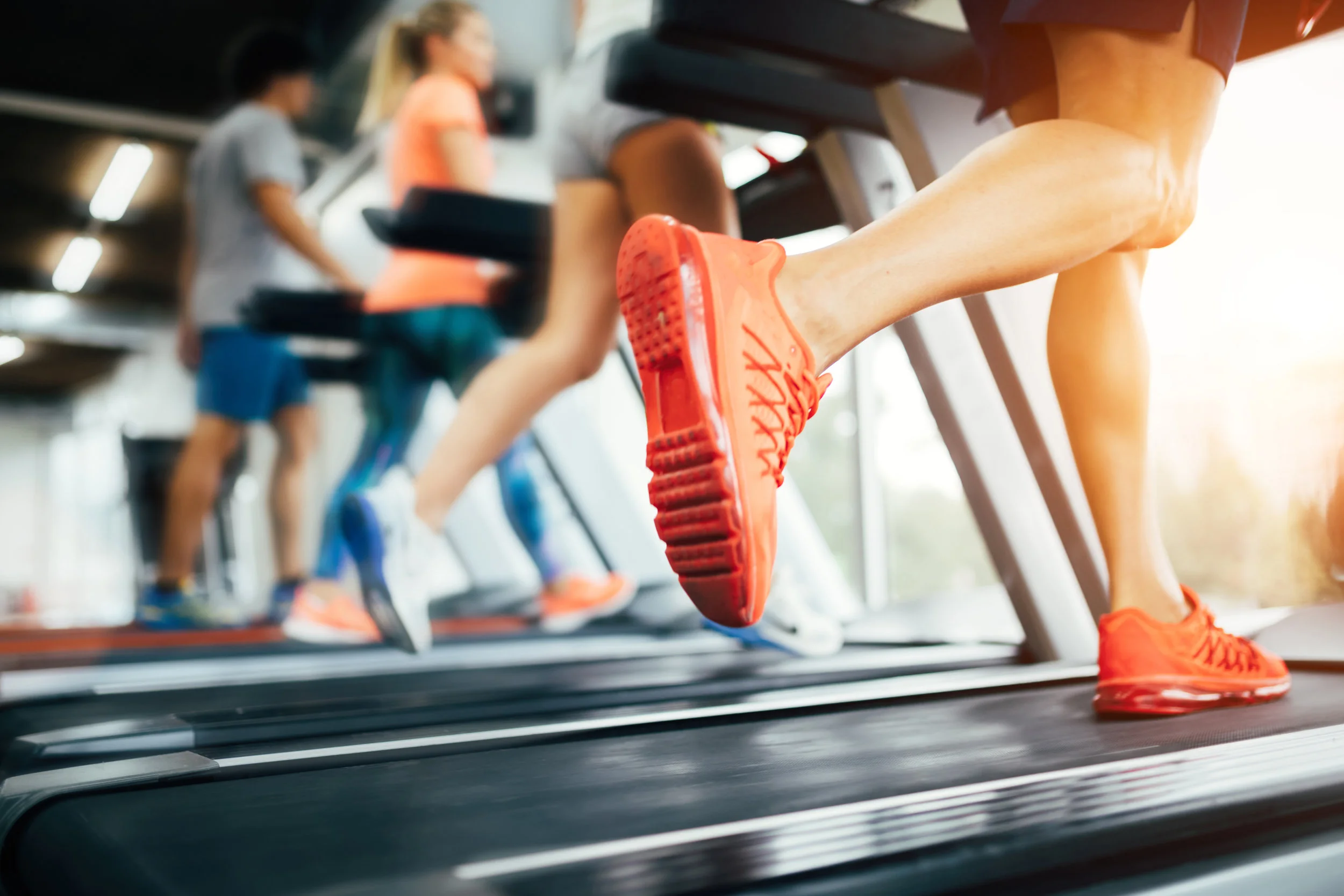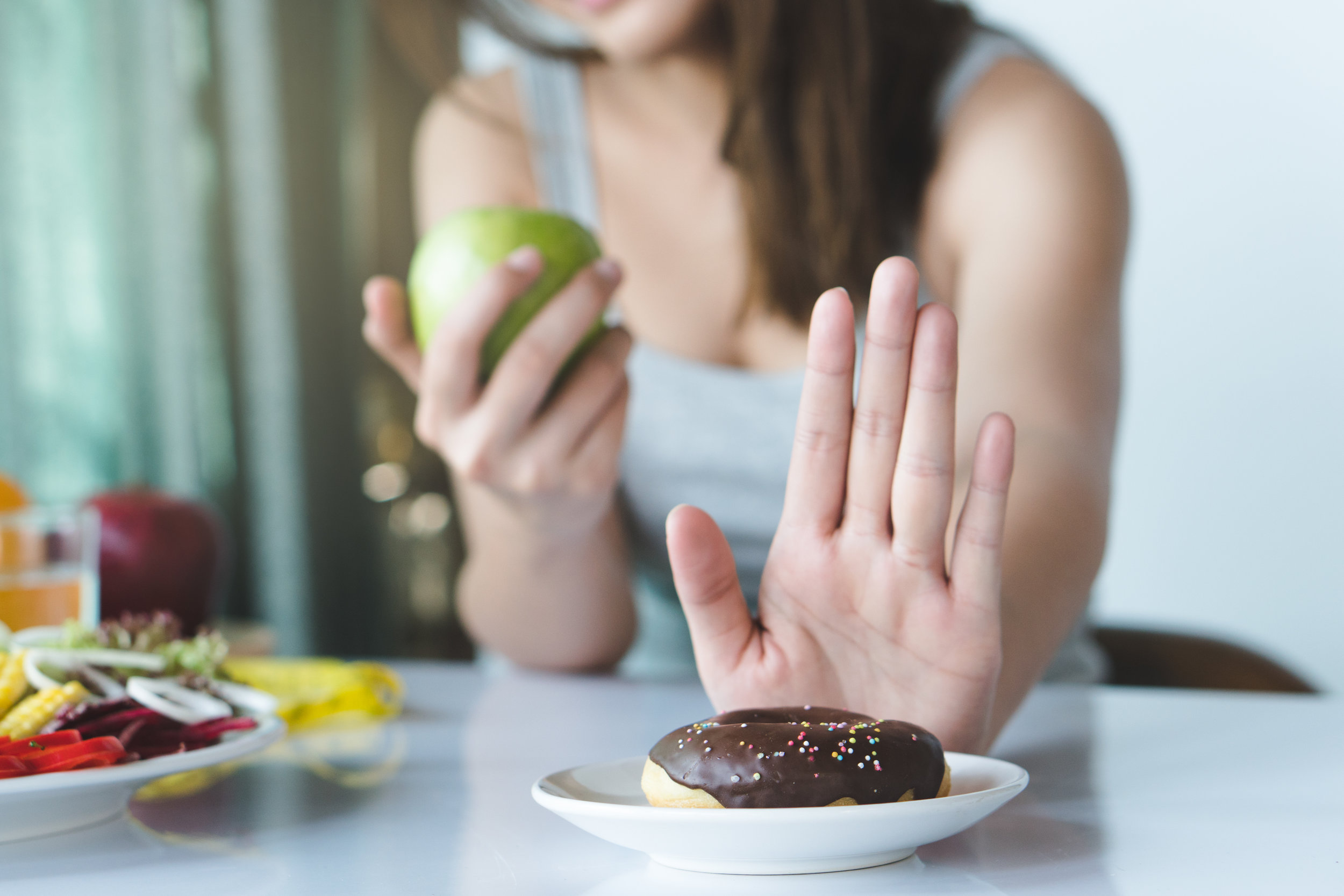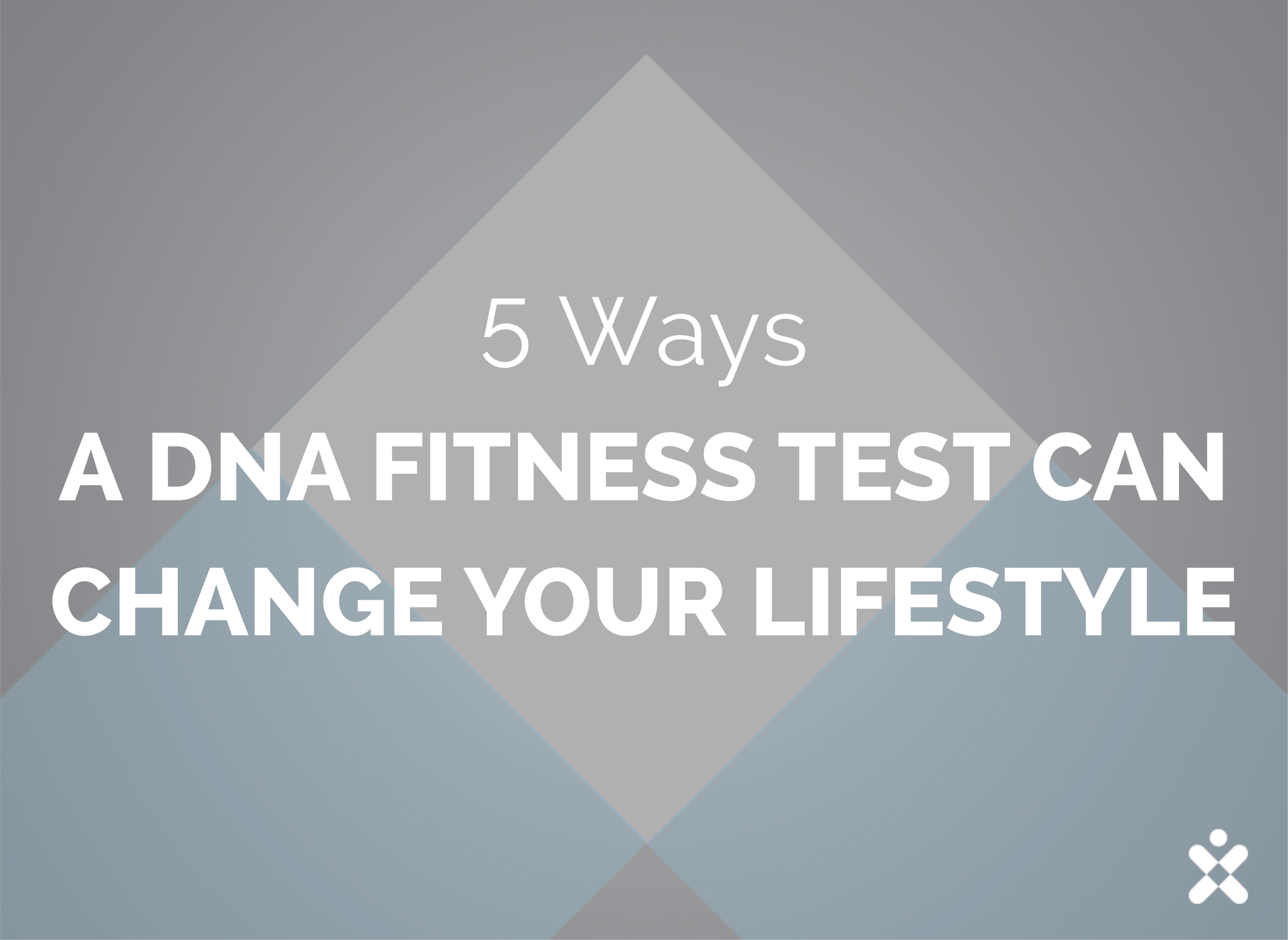Hydrostatic Body Fat Testing: Is it Accurate?
How To Prepare for a Dexa Scan (5 Steps)
Dexafit provides many health and wellness tools, benefits, and information to help people get the most out of their fitness journey. One of our most popular services is the Dexa (DXA) Scan, and there are several steps you need to take to prepare for it.
Dexa scan preparation is easy and painless. That said, these protocols are requirements that everyone must follow in order to get an accurate and safe Dexa scan reading.
What is a Dexa Scan?
The Dexa (DXA) Scan is an FDA approved procedure that gives you a closer look at your body than you have ever had before. It offers you an advantage in meeting and surpassing your health and weight loss goals while also returning data on how you're doing on the inside.
The DXA in Dexa Scan stands for Dual Energy X-Ray Absorptiometry. This means that the scan uses two (dual) X-ray beams to scan your body in a thorough yet noninvasive way. Due to this, we can guarantee that the exposure to radiation is low.
How long does a Dexa Scan take?
The DXA Scan itself is brief, taking between 7-12 minutes to completely and accurately test your body composition. Positioning can take a minute or two longer depending on your body type.
The two X-ray beams scan your body from top to bottom, carefully measuring your bone density, muscle composition, as well as the amount of fat you carry and how it is distributed throughout your body.
Before undergoing the scan, however, there are a few ways to prepare.
How to Prepare for Your Dexa Scan
All preparations take place just moments before the scan and are all extremely easy. Many people find the Dexa Scan to be super convenient because it allows them to pop in and out without much hassle.
1. What to wear
When it comes to what to wear for a Dexa Scan, you should wear tights, compression shorts, or other workout clothes. Don't wear loose clothes that are bulky, such as jeans or pants with lots of pockets.
Small buttons or zippers that cannot be removed from clothing are fine, but not having these is a plus.
We recommend that women wear a supportive bra (like a sports bra) for the Dexa Scan.
At some locations, your DexaFit specialist may provide a gown for you to wear during the scan. You can call your specialist and ask whether or not this is something they’ll provide for you.
Lastly, please wear socks!
2. Remove all metal and jewelry
Prior to your Dexa Scan, your specialist will ask you to empty your pockets and remove all metal and jewelry. Common metal materials you carry around may include keys, watches, earrings, rings, belt, glasses, etc.
3. Avoid calcium supplements and other substances
Stop taking calcium supplements 24 hours before your scan. This includes multivitamins as well as antacids such as TUMS®.
In addition, do not have any gastrointestinal contrast, barium or other contrast medium, or radionuclides within 48 hours of your appointment.
4. Fast for two hours prior to the scan
For the clearest scan results, we ask that you please fast for two hours prior to your Dexa Scan.
5. Stay hydrated
Please arrive plenty hydrated for your Dexa Scan.
We also ask that you limit your activity prior to the scan. Please don’t exercise until after the scan is complete and your DexaFit specialist gives you the ok.
Bonus Step: Download the DexaFit App
If you want to come to your appointment even more prepared, you can also download the free DexaFit mobile app called “Fit AI” for iOS and Android.
Simply download the app, create an account with your email address as the username, and your results will appear in the app after your scan is complete and the data is processed!
Once this has been done, you'll take the scan and be done with the whole procedure in thirty minutes or less. After the scan, most people return to their daily activities without issue.
Avoid a Dexa Scan if Pregnant
If you’re pregnant or suspect you might be pregnant, be sure to alert your physician as well as the x-ray technologist. Though the scan is safe, there are further adjustments that can be made to minimize exposure and risk to your baby.
While you can certainly take the scan while pregnant, we do recommend waiting until after your baby is born, if possible.
What Exactly Does the Scan Do?
The Dexa Scan is designed and used to identify any and all problems, diseases, and conditions in the body. By looking at bone mass, bone mineral density, and body composition, the scan can check for certain diseases like liver disease, rheumatoid arthritis, and osteoporosis before they actually occur.
The scan looks for internal warning signs of these diseases that might not show themselves until after its too late, giving you a useful advantage in reclaiming your health before problems develop.
In addition to looking for these diseases, the Dexa Scan can also find weak points in your body and other risk factors. These weak points include areas where muscle mass is thinning, if there is any bone loss, or where fractures are more likely to happen. With this knowledge, you can give special attention to these areas to strengthen them to lower the fracture risks or chance of breaking a bone.
Finally, the Dexa Scan also measures your body composition. This includes the amount of body fat you carry as well as how and where it is carried in the body.
The Dexa Scan returns measurement data on deep belly fat, also known as visceral fat, and can be used to help identify and diagnose certain diseases and health problems like cardiovascular disease, breast cancer, and type-2 diabetes.
The scan is so thorough that it will be able to find excess fat between organs, identify problem areas, and determine issues like high cholesterol and metabolic disturbances. With the Dexa Scan, you are really getting a behind-the-scenes look at your body, giving you the knowledge and control you need to prevent health issues, lose weight, and improve your overall fitness.
Results: What You'll Learn and How to Proceed
After the Dexa Scan, your test results will return data on your percentage of visceral fat, weak points within the body, warning signs of possible health issues and diseases, and more. You’ll be able to access the data yourself on the Fit AI mobile app.
The information from your results might be overwhelming at first, but it offers you a comprehensive look at where your body is health-wise.
The results of your Dexa Scan are meant to help you know how much exercise you need, the type of diet you should start, the best ways to build muscle mass, and how to pull your body into the best shape of your life.
You can learn how to target specific problem areas of visceral fat, thinning muscle, and brittle bones as well as gain pointers on how to improve fitness and overall health and wellbeing.
Creating workouts, dietary plans, and wellness goals around the specific needs of your body are important steps for feeling better and living longer.
For example, with the help of the Dexa Scan, you can identify the exact location of lean muscle in your body. This information is important because lean muscle plays an important role in the regulation of your metabolism as well as prevents bone thinning and helps prevent chronic diseases and pathologic conditions.
Focusing on your muscles and strengthening them also improves blood sugar, sleep, and your balance! When your blood sugar is regulated, your balance is stable, and your sleep is sound and refreshing, you will find that your quality of life improves exponentially.
Imagine how much better you can feel and look when you work on improving the different areas indicated in your Dexa Scan results.
Why You Should Get a Dexa Scan
In short, the Dexa Scan has the power to improve your life. This scan offers a simple way to tremendously alter how you view your health and wellness, while also giving you the tools to change how you approach fitness and diet.
The scan also helps you to work closely with your doctor about potential issues with your body. By pinpointing and determining problem areas, you and your doctor can make plans prevent and handle any health issues that come your way.
Furthermore, the Dexa Scan prep is easy to follow and makes for a fast appointment.
Sign Up for Yours Today!
The Dexa Scan is all about the individual. It provides accurate results about your body that help you understand it better than ever. This information is absolutely priceless when it comes to finding ways to improve your health, wellness, and quality of life.
If a Dexa Scan sounds like a great idea to you, you can sign up for one today. We have locations from San Francisco, California to Boca Raton, FL, and just about everywhere in between.
When you find a location nearest you, you can easily set up an appointment to get your own Dexa Scan done!
How the Fit3D Proscanner is the Future of Wellness Assessment
BMR vs. RMR: Everything You Need to Know
For many people, BMR (Basal Metabolic Rate) and RMR (Resting Metabolic Rate) are synonymous. Both titles refer to roughly the same concept, and so have very little difference in one's mind. The truth, however, is that BMR and RMR actually have differences that make a difference when it comes to watching your weight and counting your calories.
Understanding the difference between these two titles may not be the first step to understanding your body, but it is an important one nevertheless. Fortunately for you, we have compiled everything you need to know about your BMR and RMR as well as the differences between them.
The Similarities
Basal Metabolic Rate and Resting Metabolic Rate are used to estimate and ultimately measure the amount of calories one burns if they are at rest for 24 hours.
In short, these rates are used to figure out the minimum amount of energy necessary for a person's body to keep functioning at a healthy homeostasis: lungs breathing, heart beating, brain working, and a normal body temperature maintained. The rates are figured through a selfsame process, but this is where the similarities of BMR and RMR end.
Both BMR and RMR are measured using gas analysis through one of two ways: either direct or indirect calorimetry. RMR can also be estimated using a certain equation known as the Mifflin St. Jeor Equation. This equation takes sex, age, height, and weight into account.
Though they measure roughly the same thing, BMR is measured using more restrictive conditions, while RMR is measured under looser conditions. What's more, there are certain requirements that must be observed before taking a person's Basal Metabolic Rate.
With their Resting Metabolic Rate, no such requirements apply. The differences in the final measurements affect the final reading, giving way to the differences between the rates.
What is BMR?
One's Basal Metabolic Rate is the rate at which a living being (typically a human, but most all mammals apply) gives off heat while at complete rest. It is measured while the individual is awake, but completely at rest. In most cases and for the best results, the test is conducted in a darkened room after the person has just awakened from at least eight hours of sleep.
This is to ensure that the individual is at their most calm and rested. To ensure that the test subject has indeed achieved eight hours of rest, most individuals are required to spend the night in the testing facility.
In order to get accurate results and estimations, it is imperative that the individual does not exert any extra energy while they are undergoing their test. Any type of unnecessary exertion can ruin the readings, resulting in the test needing to be redone.
Most testing facilities have the individual recline so that they are resting completely. In addition, they are required to fast for 12 hours before they take the test. This is to ensure that not even their digestive system is working during the test.
Since the goal of the BMR is to find out how much energy is needed to keep the body functioning while at complete rest, the only energy that should be released during the test is what is needed to keep vital organs and functions going.
As a reminder, these functions are: maintaining a normal temperature, maintaining a regular heartbeat, and breathing normally.
What is RMR?
Resting Metabolic Rate is also known as Resting Energy Expenditure (REE). As the name implies, this test measures how much energy is required to keep the body in perfect homeostasis while asleep or resting.
Because this test is conducted while the individual is asleep, it is much less restrictive than the BMR test. It does not require the individual to sleep over at the testing facility, nor do they have to get at least eight hours of sleep before the test is conducted.
Like the BMR test, the RMR test requires the individual to rest while reclining for ultimate relaxation. The test can be conducted at any time of day and is usually done so after three or four hours of fasting.
Like the BMR test, the RMR test is designed to measure the amount of energy you burn in 24 hours while maintaining basic bodily functions such as breathing, heartbeats, and maintaining a normal temperature. The difference, however, is that the RMR reading also includes the number of calories burned while eating and doing light activities such as stretching, walking, going to the bathroom, etc.
Consider your around the house activities while having some time off or on a weekend and factor these into your RMR results. These are the small activities that the RMR takes into account.
The Difference in Calorie Estimation and How it Impacts Your Results
Once the tests have been conducted and the results have arrived, the final and biggest difference is revealed: how the calories are estimated. When the results are compared, RMR readings are usually a little higher than BMR readings. However, according to the National Research Council, the difference is almost always less than 10 percent.
It is most important to note, however, that most doctors find that your BMR is more accurate than your RMR. This is largely due to the restrictive procedure required to get a reading. Since the test is so controlled, there is no interference from other factors.
In short, the BMR test is just a purer reading and estimation of calories burned.
Factors That Affect Your RMR
Of course, there are many factors that can affect your RMR. These factors do not drastically change your metabolic rate, but they can alter the results and readings.
According to Body Building, these factors include:
Muscle Mass: The more muscles you have, the higher your Resting Metabolic Rate is. This is because you are always exerting more energy because you are likely using muscles that, on average, don't get much use.
Age: How old you are can affect your RMR. As you get older, your metabolism naturally slows down, making it harder to burn fat and calories. Due to this, your metabolism isn't working as hard even while at rest, resulting in a decreased RMR.
Genetics: Like all things, your genes can affect your metabolic rates. In the case of your RMR, your genetics can actually reduce the rate.
Weather: That's right, even the weather can affect your RMR. Most readings find that individuals living in a cold environment have an increased RMR. The cold is a major factor because those it causes you to exert more energy while doing simple, daily activities. Just moving around in the cold winter takes a lot of effort. When it is warmer, this problem is nonexistent since it takes a lot less effort to get going during the spring and summer.
Other factors may come into play for different people such as pregnancy, taking supplements, and even intense dieting. Bottom line, your RMR can be tweaked and changed by a number of factors, reinforcing the accuracy of your BMR.
Since so many things can ultimately affect your RMR reading, it is important to take the test results with a grain of salt or to seek another test a few times a month.
Takeaways
Whether you are looking to increase our fitness level or just learn about your body, knowing the difference between BMR and RMR is important and useful. These rates help you understand just how much energy your body is using and the number of calories being burned even when you are at your most rested.
Many individuals can get caught up in calorie burning during exercise, but the body is always working to keep itself healthy and stable. With this knowledge, you can hopefully face both exercise and downtime with a new perspective.






















How can hydrostatic body fat testing benefit you? Find out the pros and cons of hydrostatic weighing to decide whether or not this method is right for you.